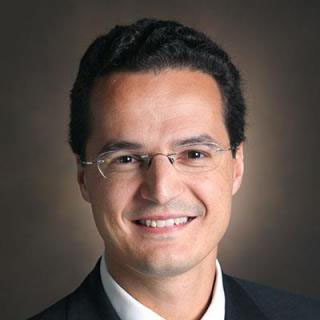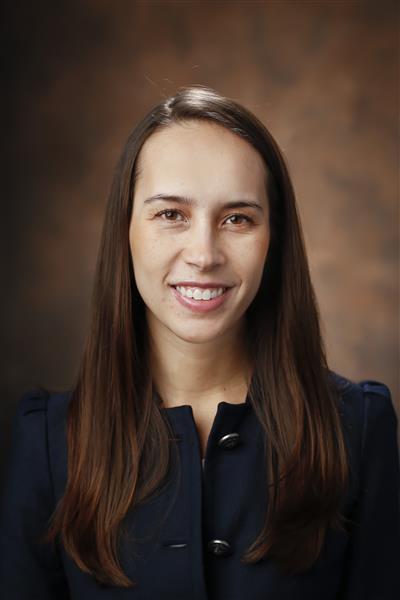Facial synkinesis is among the most daunting of diagnoses, since the psychosocial impact of an asymmetrical expression is far-reaching and magnifies concern about the physical abnormality.
At Vanderbilt University Medical Center, specialists in otolaryngology and facial plastic surgery are taking up the challenge of addressing the condition with outcomes that approach natural expression.
Synkinesis can result after facial nerve injury from trauma, tumors or virus-mediated nerve damage, with the latter believed to be a cause of Bell’s palsy, the most common presentation of synkinesis. The use of botulinum toxin (Botox) injections for this facial nerve miswiring has been increasing. Botox injections incapacitate overactive muscles, improving facial movement. Yet, precisely reconstructing the complex nerve networks and muscle coordination that create the ballet of facial expression remains confounding.
Otolaryngologists and facial plastic surgeons Scott Stephan, M.D., Shiayin Yang, M.D., and Priyesh Patel, M.D., are partners in a novel exploration of electromyography (EMG) wave patterns that could guide the precise amount and placement of interventional Botox or surgeries to replicate original muscle movement.
“The novelty is that we are not just locating the muscle, which is nothing new, but that through tracking amplitude and frequency, we are listening to that muscle’s pathology and its patterns in real time,” Stephan said.
Ultimately, the team hopes to develop a customized map for each patient based on the EMG waves for each of the relevant facial muscles.
Symmetry is Attainable
After any facial nerve injury, nature regenerates the nerve but does so imperfectly, connecting nerve branches to each other and to muscles that didn’t connect before, Yang explained. This cortical remapping and nerve regeneration down the peripheral branches results in unwanted movements, the definition of synkinesis.
“As a result, the person may close their eye and then the corner of their mouth will twitch up, or they’ll have extreme neck tightness, or when they smile their eye closes. It can be very debilitating,” Yang said.
“There is a lot that can be done.”
In Bell’s palsy, which is an acute, complete loss of facial nerve function on one side of the face, patients are often sent home with the reassurance that they are going to get better. However, Yang says many will have some kind of residual dysfunction or abnormality. Acute treatment recommendations to encourage nerve recovery in Bell’s palsy are high-dose steroids, with or without antivirals, as soon as possible.
“It is not uncommon for patients and physicians to be unaware of treatment options,” Yang said. “Overwhelmingly, patients tell me they were told there was nothing else that could be done. But there is a lot that can be done.”
Botox for the Long Term
Past the acute stage, physical therapy may be prescribed for those who continue to lack neuromodulation or, most commonly say the researchers, Botox injections. Botox may be used on a three-month interval basis and can be a guide to surgery, if it is warranted.
“The goal of Botox or surgery is to weaken the overactive muscles to give the patient a more symmetric face. This enables them to eat better, speak better, see better, and return from social isolation,” Yang said.
Decades ago, the Vanderbilt Voice Center pioneered EMG-guided Botox injections for laryngeal disease and spasmodic dysphonia, where very small doses must be applied in exactly the right location to protect breathing capabilities.
“We parlayed our laryngology colleagues’ work in vocal cord to instruct our treatment of patients with facial synkinesis,” Stephan said. “To my knowledge, we’re the only one using EMG wave characteristics for facial synkinesis treatment.”
Myectomy or neurectomy may be offered when a patient has reached either a plateau or has achieved maximal benefit from the Botox treatment, he added.
“Following multiple sessions to map those muscles and understand their pathology, you can remove portions of the main offending kinetic muscle, or you can selectively section distal nerves,” Stephan said. “It’s still not clear yet which leads to the best long-term results, so we’re doing a combination to achieve the equivalent of a more permanent Botox effect.”
Refining Interventions
The team’s mapping studies to define relevant EMG patterns are both incremental and translational.
“We hope through our research we can quantify these EMG findings and, as we go, we are applying what we are learning to offer more refined treatment,” Stephan said.
Currently, Yang, Stephan and Patel see over 130 synkinesis patients over their six-day synkinesis clinics that take place every three months.
“We are applying what we are learning to offer more refined treatment.”
“All of us are very passionate about it. A lot of patients say, ‘I quit my job’ or ‘I don’t go out’ or ‘I avoid photos.’ It’s so heart-wrenching,” Yang said.
“There is a cost that comes with traveling to Vanderbilt every three months, and it shows the value these folks receive and how important it can be in improving their quality of life,” Stephan said.






